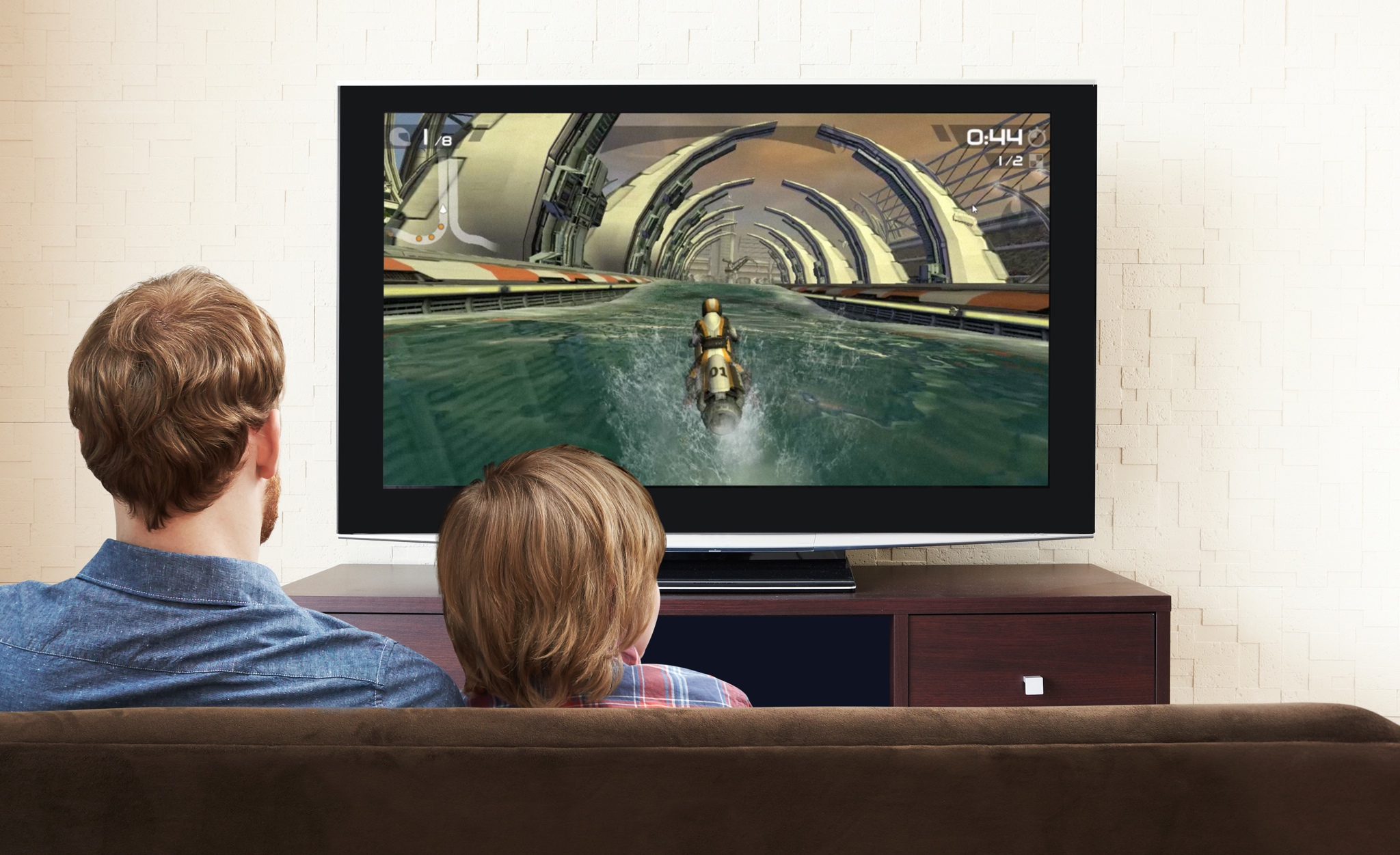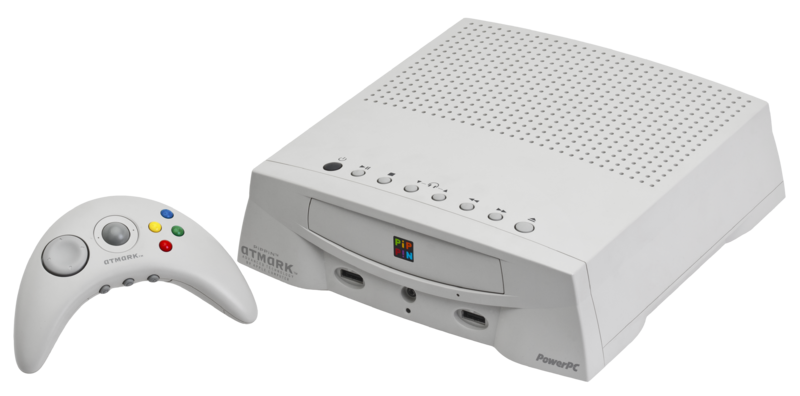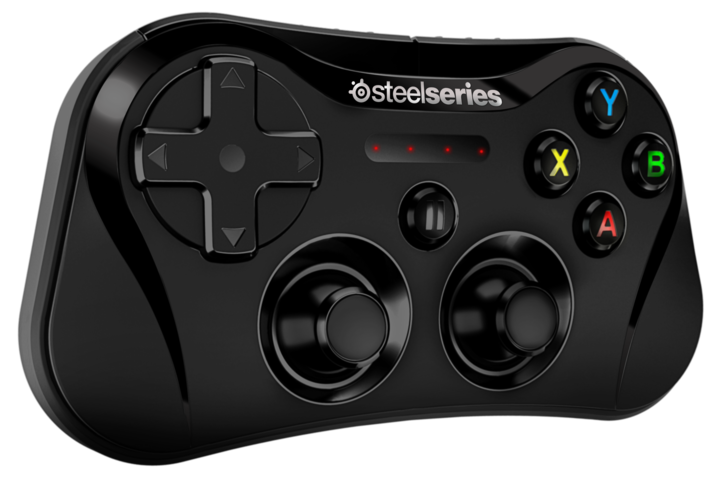
At this point, I think we can all agree that the state of gaming on the current generation Apple TV leaves a lot to be desired. Yes, it’s possible in some respects, through AirPlay, but it’s clunky, laggy, and never quite lived up to its potential.
With the new Apple TV, however, things will surely get better. In fact, I think that gaming is going to really hit its stride on Apple platforms with the advent of the new gaming-centric features on Apple’s upcoming refresh to its set top box.
As we discussed in the last episode of Let’s Talk iOS, gaming is set to take a gigantic leap with Apple TV gen-4. In this post, I’ll outline 5 reasons why avid gamers should start licking their chops at the potential of the device that Apple is set to reveal next Wednesday.
Bigger, faster, stronger
The current-gen Apple TV 3, while faster than its predecessor, leaves a lot to be desired in the speed department. It comes bundled with a single-core A5 system on a chip, a paltry 512MB of RAM, and a measly 8GB of on-board flash storage. In other words, it didn’t turn many heads back in 2013, and it’s definitely not turning heads today.
Thankfully, the new Apple TV will be much beefier from a technical perspective. It’s rumored to feature at least an A8-level chip, which is dual core (tri-core in the case of the iPad Air 2’s A8X), and runs circles around the old A5 found in the current-gen Apple TV.
The new Apple TV will also likely feature more RAM for a smoother gaming experience. I’d expect, at minimum, that we’ll see 1GB of RAM, if not 2GB of RAM included in the new set top box.
No battery bottlenecks
This is probably one of the most overlooked aspects of the Apple TV from a gaming perspective. When we think of gaming on the Apple TV, we immediately think of gaming on an iOS device. But it’s not that clear cut…
Because all of Apple’s other iOS-based devices run on batteries, they have to be extra conscious of power consumption, and thus are more prone to CPU throttling. Since the Apple TV has no batteries, it can keep its foot firmly on the gas pedal when it comes to CPU clock speed, catering to extra RAM, and virtually anything else that normally has to tip toe around battery management.
Of course, this doesn’t mean that the upcoming Apple TV refresh will be careless and inefficient when it comes to power consumption, but not having to worry about battery life is a huge win for gaming and other processor-intensive tasks.

The Apple TV power cord—an unheralded difference maker
The App Store
Having a true App Store is an obvious win for gamers. If you want to play games on your current-gen Apple TV, you’ll need to use AirPlay mirroring from an iOS device. I think all of us can firmly attest to the fact that AirPlay mirroring equals a subpar gaming experience, and has been a disappointment overall.
Being able to run apps natively on the next-gen Apple TV not only opens up a potentially vast library of games, but it also means that games will run like they do on other consoles and set top boxes.
With iOS devices like the iPhone and the iPad, Apple has proven that it’s a force to be reckoned with in the gaming space. Its handheld devices have ate into a lot of the profits normally reserved for handheld gaming staples like Nintendo and Sony, and now Apple gets its first real shot at our living rooms. And yes, this truly is the first shot; the Pipin doesn’t count.

Apple’s first gaming console—the Pippin
Real input device
The current-gen Apple TV remote is terrible for just about everything—even navigating simple menus in the Apple TV interface. It’s unquestionably horrible for any sort of gaming, and using an iPhone via AirPlay as a controller is a laggy experience at best.
With the new Apple TV, not only will we have better input options by means of the rumored Wii-inspired motion remote, but there have also been rumblings of true 3rd-party Bluetooth controller support.
Having a real gaming input device legitimizes Apple’s foray into living room gaming. If it wants to capture more than just casual gamers, and if it wants to be seen as a legitimate gaming platform, the new Apple TV will need to support traditional input devices for gaming.

A traditional gaming input device can make a difference
Continuity
Apple has already proved that it’s really good at providing continuity features between apps running on iOS and apps running on the Mac. Now it can do the same for gaming on portable devices and gaming on the living room screen.
Imaging for a moment, playing a game while sitting on your couch; you’re really deep into the game, and you’re just about to beat the final boss that you’ve been trying to defeat for the last few days. All of the sudden, you get a phone call and you have to leave. Imagine picking up your iPhone, hopping on the train, and picking up right where you left off.
Other console manufactures have tried to venture into this territory in the past, with mixed results at best. Apple is already doing it with apps between its iOS devices and the Mac, and it could probably pull off similar results with gaming.
Conclusion
Next Wednesday, we’ll know a whole lot more about how serious Apple is taking its entrance into living room gaming.
I don’t know about you guys, but I am extremely excited for the new Apple TV and its gaming potential. If Apple pulls this off right, it can pick up right where it left off on iOS—making inroads on the territory traditionally dominated by gaming powerhouses like Sony, Microsoft, and Nintendo.
What do you think? Are you excited for the new Apple TV as a gaming platform? Drop us a line down in the comments and let us know.